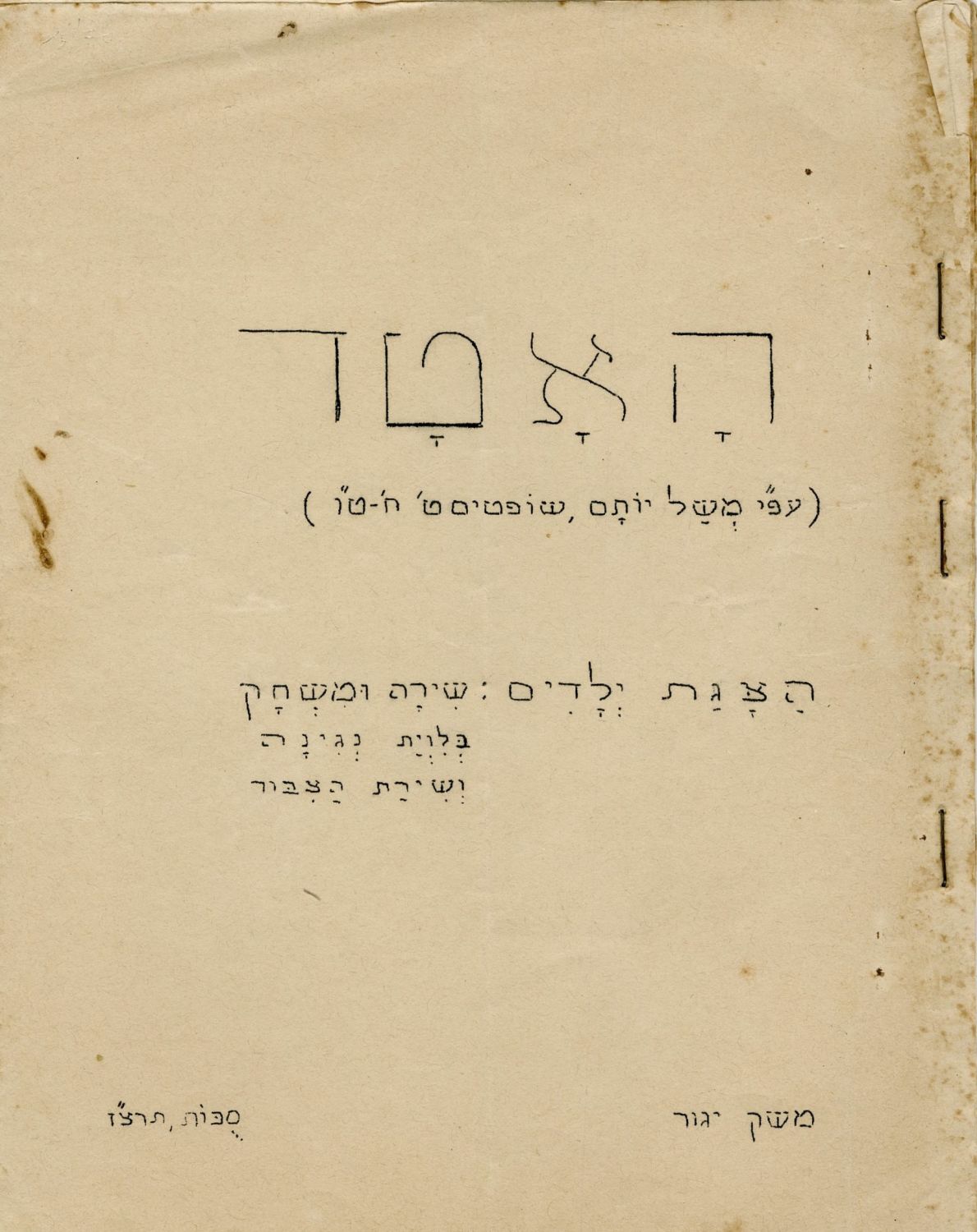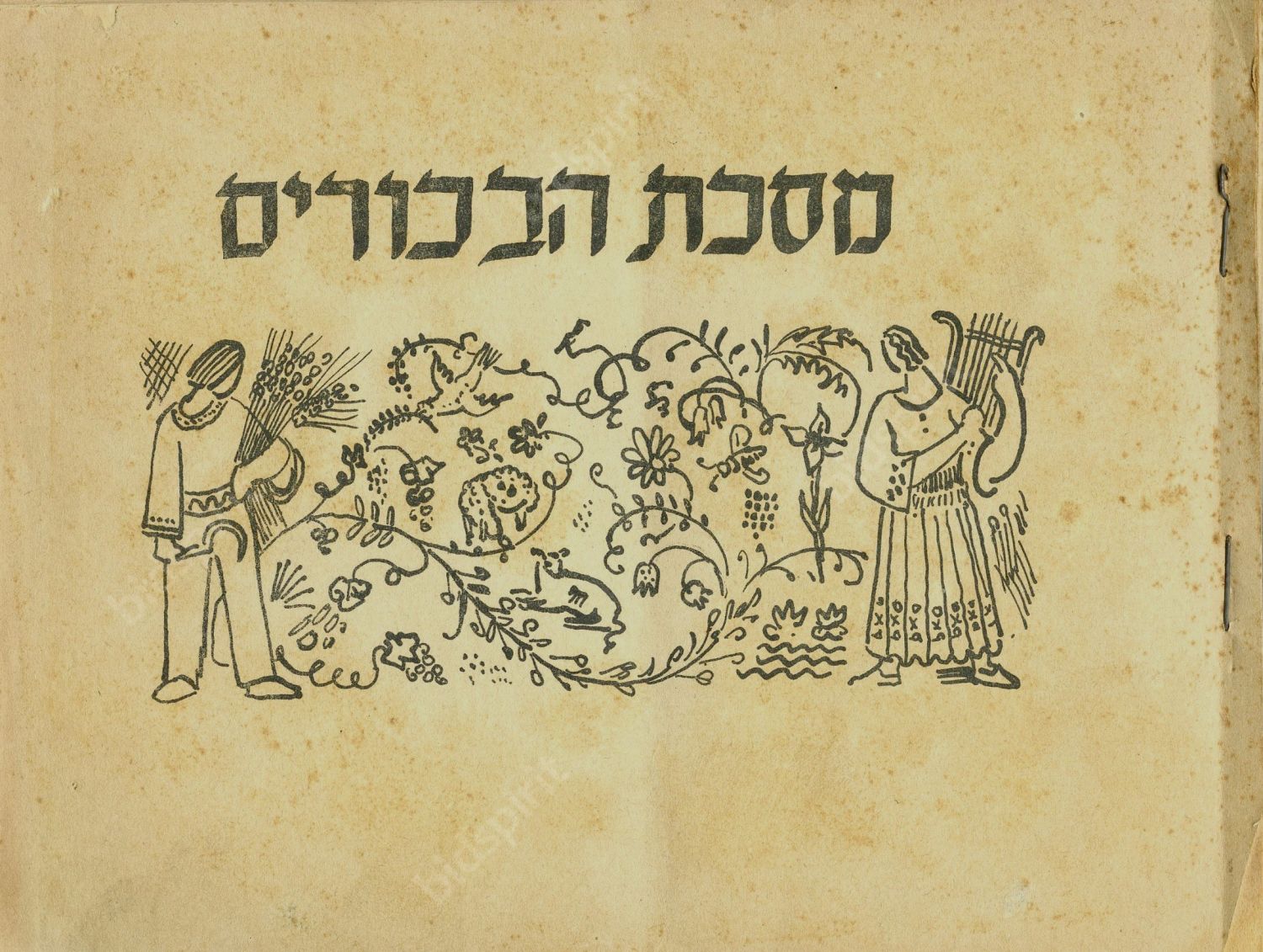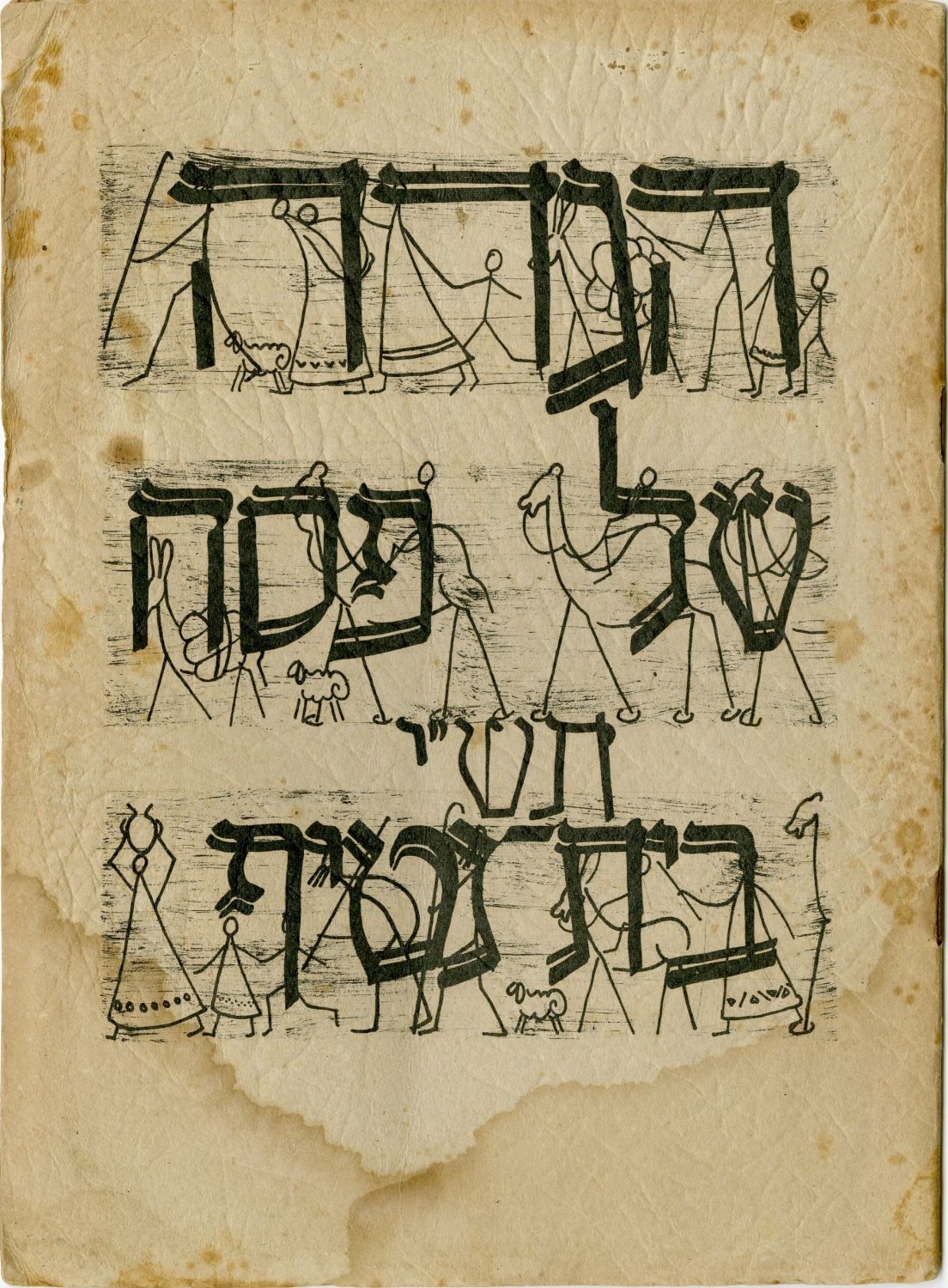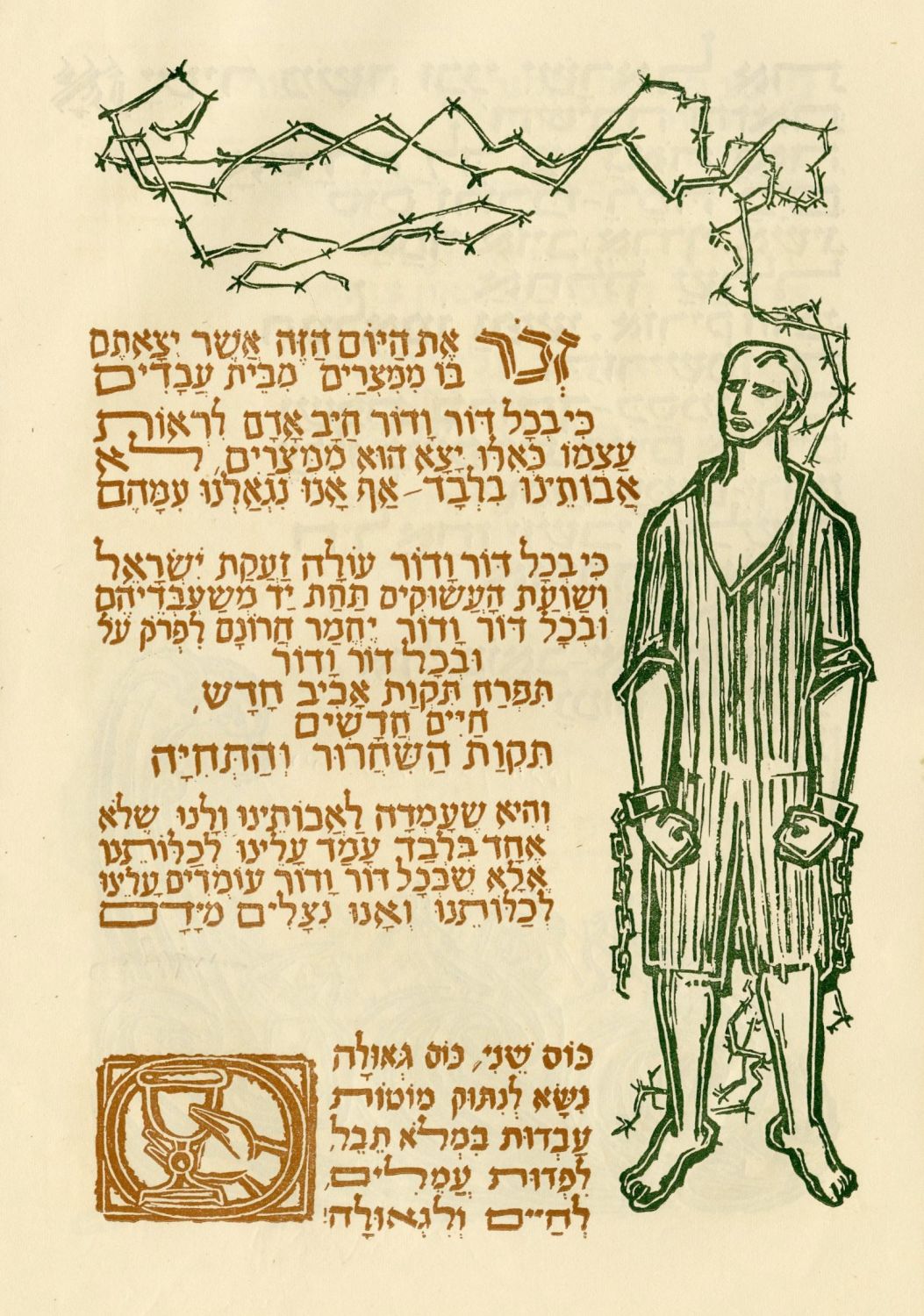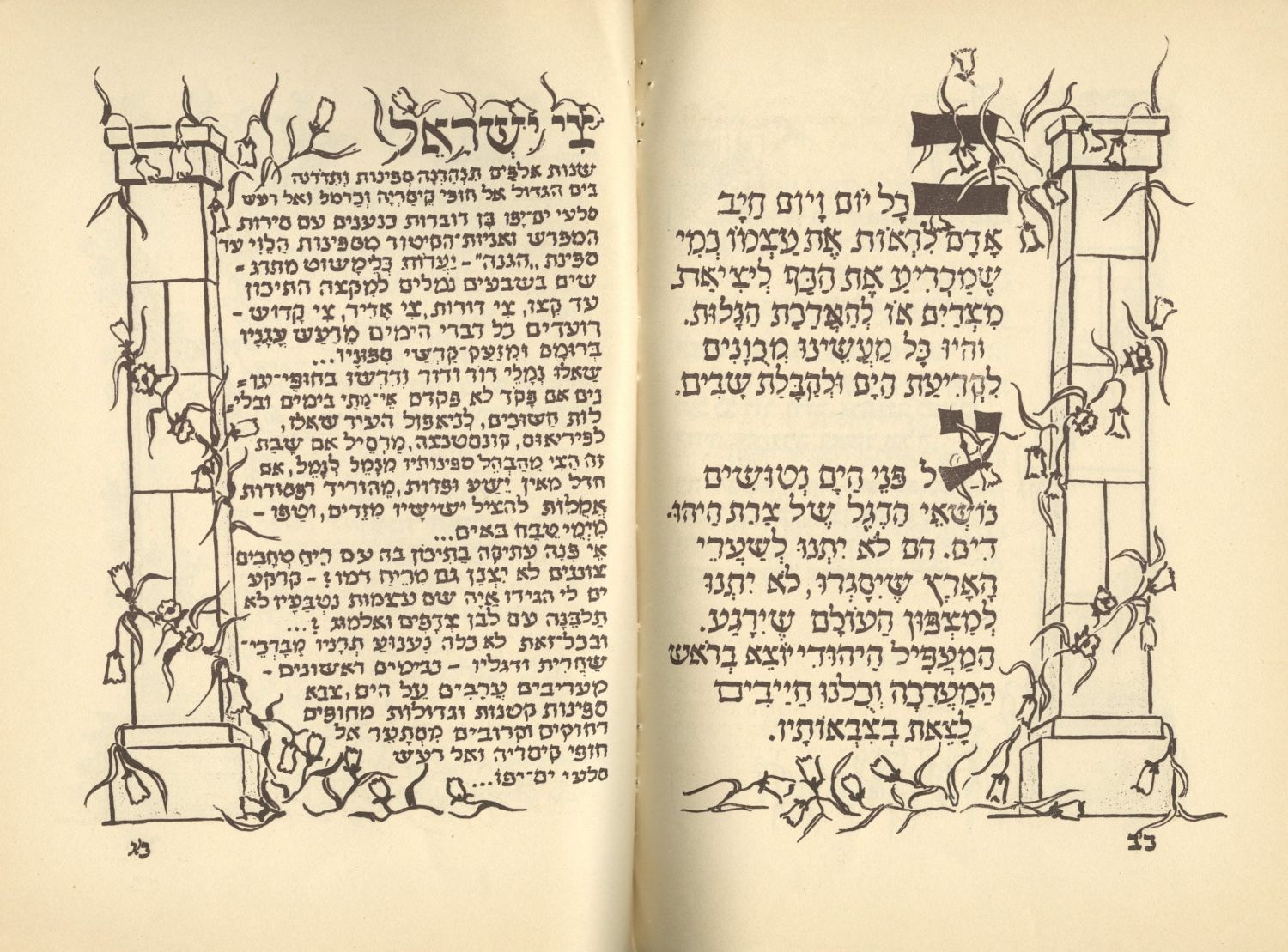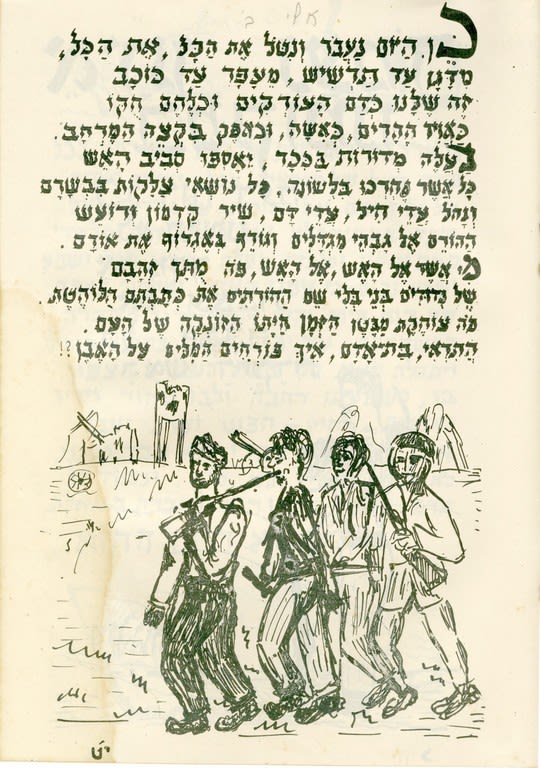Non-traditional Haggadah - Stencil printing with illustrations - Original contemporary texts referring to She'erit HaPleita, the builders of the land, and the Founding of Gvat.
The text of "Ma nishtana" refers to the tense situation in which the contemporary group served: that on all nights of the Seder, we were a man in his family, a man in his house, and this night, for the first time we are all in our group. That all nights, laborious torments will fall on their beds, and during those nights they will not take a nap for their eyes, workmen, and certainly in the dark they will feel protective of their immigrant brothers ...', And another section in memory of those who perished in the Holocaust and the fall in battles on the land:: ' why would the light will be dark? In memory of millions of massacred brothers and in memory of the heroes of the ghettos, in memory of our paratroop emissaries, and in memory of all our fallen friends in war, for the sake of the people we stand ready! '. Towards the end of the Haggadah, there is an interesting section on the founding of the kibbutz and pioneers in general: ' Let them rise from Israel, and will again immigrate to Israel, and all our forefathers will be pioneers for the wilderness to violate it and build a home for our people. And renew our little ones a bit ... Sixty tens we are exiles from the Diaspora, shady from fire. And we are the first generation of the people of Israel, who were held the plow ... We will avenge the blood of our brothers, we will carry the rest of our people to our country ... brothers! Siblings! Come !...'
Kibbutz Gvat was founded on November 28, 1926 by a group of immigrants, members of the Third and Fourth Aliyah, from the city of Pinsk, Poland. The immigrants organized in 1922, immigrated to Israel and established the "Pinsk Saints Group" in memory of 35 members of the Jewish community in the city who were executed by the Polish army in 1919 after being suspected of communism.
At the beginning of World War II, the kibbutz operated an underground broadcast station of the Haganah. The texts relating to the protection of illegal immigrants imply the Palmach departments who lived in the kibbutz in the 1940s and divided their time between work and training.
[10] leaves. 17 cm. Tear at corner of one of the leaves, good condition.




